Exploring Potential Tax Advantages of Life Insurance as an Asset
Traditionally, we think of life insurance as a necessary expense. We purchase it to ensure our loved ones will have their needs met in case of the unexpected.
In today’s rapidly shifting economic landscape, however, many people are taking a second look at life insurance as an investment. Life insurance lets you diversify your retirement strategy and enjoy potential tax savings while building your financial legacy. In many cases you can leave a tax-free benefit to your heirs.
When considering life insurance as a financial asset, you’ll want to review the potential tax advantages depending on how your policy is structured. Also for tax-related purposes, you’ll need to be aware of a special classification known as a Modified Endowment Contract or MEC.
Tax-Free Death Benefit
In most circumstances, your beneficiaries will pay no income tax on their death benefit. There are two potential exceptions to this to be mindful of.
The first example would affect beneficiaries who choose to receive the death benefit in periodic installments rather than a lump sum. When this option is chosen, the insurer will typically hold the principal in an interest-bearing account. While the principal remains tax-free, the beneficiary will owe tax on any interest earned.
In the second instance, your life insurance payout may be included in your estate. Depending on the amount of funds involved, this may push the value of your estate over the federal exemption limit and trigger an estate tax.1 You’ll want to work with your insurer to structure your policy in order to avoid this extra burden on your loved ones.
Besides potential tax savings, the death benefit is effective the day you purchase your life insurance policy. It provides immediate access to much-needed funds and is easy to divide among multiple beneficiaries without going through probate. Finally, life insurance can be structured to provide a predictable payout that is unaffected by swings in market values.
Tax-Deferred Accumulation
If you have a traditional 401(k) plan through your employer, you may defer up to $19,500 in 2021. If you are 50 or older, you may contribute an additional $6,500 in “catch-up” salary deferrals.2 Individuals with a traditional IRA may contribute up to $6,000 per year, or $7,000 for those 50 or older.3
But what if you have additional assets you’d like to save after fully funding these accounts? This is where life insurance comes in. Life insurance has no income-based funding limits, so you have some flexibility in terms of what you contribute. Your cash value can grow on a tax-deferred basis, meaning you owe no tax as long as your cash remains inside the policy.
Tax-Free Accelerated Death Benefits
The traditional purpose of life insurance is to pay out a death benefit to your loved ones after you die. But what if you receive a catastrophic diagnosis? A terminal illness may mean unexpected medical expenses and other costs that can put a financial strain on you and your family.
If your life insurance policy includes a tax-free accelerated death benefit, you may be able to withdraw cash to help with medical bills, debts and other needs. Depending on the terms of your policy, there may be a life expectancy requirement that determines when you can access the funds. You may also be required to hold the policy for a minimum period of time before becoming eligible for this benefit.4
Also known as a “living benefit,” an accelerated death benefit is typically paid on a per diem or other period basis. It is generally excluded from income tax up to a limit determined by the IRS.
Tax-Free Loans or Distributions
In many cases, a loan against the cash value of your life insurance policy is non-taxable if you are older than 59 ½ and if your policy is not classified as a Modified Endowment Contract or MEC.
If you have begun taking distributions from a 401(k) or IRA, a tax-free loan or withdrawal from your life insurance offers supplemental income that won’t place you in a higher tax bracket.
You may owe taxes if the amount of your loan exceeds total premiums paid when the policy terminates. Here’s an example:
- Cash value of life insurance policy: $400,000
- Total premiums paid: $100,000
- Outstandng loan balance of $300,000.
If you subtract the $100,000 in premiums from the $300,000 loan balance, you’re left with $200,000 by which the loan exceeds your premium payments. If your policy lapses while the loan remains outstanding, you would owe taxes on the $200,000.
While paying back the loan isn’t mandatory, there may be consequences for not doing so. If you don’t pay back the loan before you die, the amount you owe will be subtracted from the death benefit your beneficiaries receive. Also, if interest increases the loan value above the cash value of the policy, the policy may lapse and be terminated by the insurer. In this example, your loan balance plus interest would be considered taxable income.
There are three options for paying back the loan:5
1: Periodic payments of principal with annual interest payments
2: Paying annual interest only
3: Deducting interest from cash value
Modified Endowment Contracts (MECs)
The Technical and Miscellaneous Revenue Act of 1988 (TAMRA) resulted in some life insurance policies being classified as modified endowment contracts, or MECs. As with traditional life insurance policies, MECs usually pay a tax-free death benefit to your beneficiaries.
However, TAMRA subjects all cash value life insurance policies to what is called the “7 pay test.” Here’s how it works:
- All single-premium policies are automatically classified as MECs.
- All flexible premium policies are assiged a premium limit based on individual factors such as the age of the policyholder and the face amount of the policy.
- Any premium paid beyond this limit within the first seven years results in the policy being classified as an MEC.
In other words, if you put more money into your policy than the premium limit within the first seven years, your policy will be classified as an MEC. Loans and withdrawals from an MEC are taxed on a last-in-first-out basis. This means any taxable gains your money has earned are reported to the IRS first, ahead of nontaxable principal. In addition, you will pay a 10% penalty if you withdraw or borrow against an MEC before age 59 ½.6
Remember, an MEC is still a life insurance policy that offers tax-free death benefits and tax-deferred cash value accumulation. However, you need to be aware of the potential tax implications of taking loans or cash withdrawals.
Other Considerations When Purchasing Life Insurance
There are many factors to consider when selecting a life insurance policy. The cost of premiums and insurance charges will depend on your age and health at the time of purchase. Your policy may require health and financial underwriting. You may also be responsible for fees and surrender charges when making withdrawals from your policy.
Finally, tax implications could change depending on what new laws Congress may enact in the future.
At The Resource Center, our professionals will review your needs, answer your questions and help you craft a life insurance policy that meets your needs.
Call us at 417-882-1800 or reach out online to set up an appoinment.
Sources:
1: https://www.nerdwallet.com/article/insurance/is-life-insurance-taxable
4: https://lifehappens.org/life-insurance-101/what-are-living-benefits-of-life-insurance/
6: https://www.investopedia.com/articles/insurance/10/avoid-modified-endowment-contract-traps.asp






